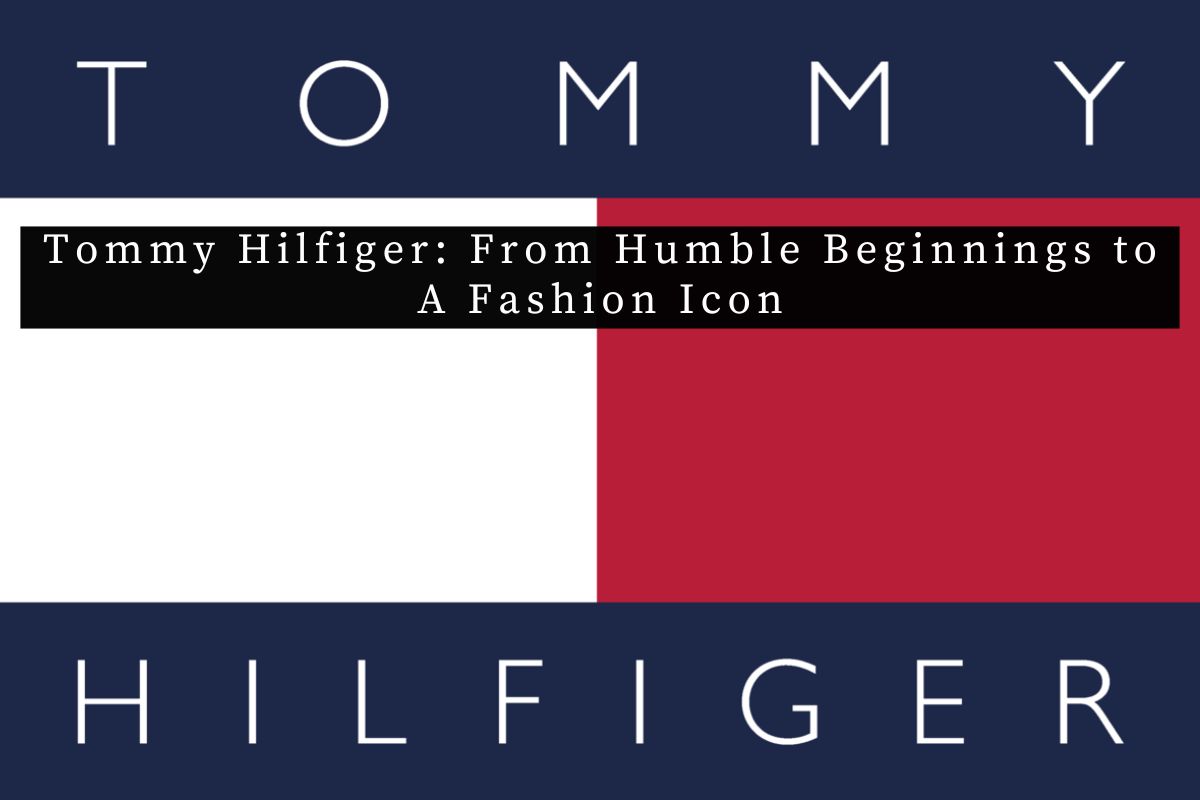Tommy Hilfiger’s story is one of those inspiring tales of perseverance, creativity, and determination. The fashion designer and founder of the Tommy Hilfiger Corporation built his brand using his signature red, white, and blue tag, and it is now one of the most iconic names in the fashion industry. Despite not attending design school, Hilfiger proved that passion, hard work, and an unwavering commitment to excellence can help one achieve success in any field.
Table of Contents
ToggleStarting From Humble Beginnings
In 1969, at the age of 17, Tommy Hilfiger started a business selling jeans with his high school friends. He used his life savings of $150 to buy 20 pairs of landlubber jeans from New York City and brought them back to his hometown, Elmira, New York. He opened a hippie clothing shop called The People’s Place, where he used to buy clothes from New York City and sell them at his store. Later on, he began designing his own clothes, which he later wrote, “designing made me happier than anything I’d ever done. I knew from that early work that designing would be my life.”
Despite the success of The People’s Place, the retail market went into an economic slump in 1977, and the company went bankrupt. After the bankruptcy, Tommy Hilfiger believed it was important to learn the nuts and bolts of business and not solely on the creative side. Therefore, in 1979, he moved to New York City, where he worked at several retailers as a full-time fashion designer. In the same year, he set up a company called Tommy Hill. For five years, he worked for many big names in the fashion industry, including Perry Ellis and Calvin Klein.
From Tommy Hill to Tommy Hilfiger Corporation
For many years, Tommy Hilfiger wanted his own label, and in 1984, he got the chance when Indian textile mogul Mohan Marjani approached him to head a men’s sportswear label under his own name. Together with Mohan Marjani, Tommy Hilfiger started a very bold marketing campaign that included a billboard in New York City’s Times Square announcing Tommy Hilfiger as the next big thing in American fashion. As he said, “I think I am the next great American designer, the next Ralph Lauren or Calvin Klein.”
The bold tactics of self-promotion were initially looked down upon, but later it worked, and soon his trademark red, white, and blue logo became wildly popular. According to one survey, after only two years of his ads, he had succeeded in convincing 68% of sampled New Yorkers to name him as one of the top four or five important designers.
In 1986, when the company was grossing $25 million per year, he bought out Marjani and started a partnership with Hong Kong-based clothing manufacturer Silas Chou. He then started to hire senior executives from his rivals, such as Liz Claiborne and Ralph Lauren. In 1992, the company was well established and grossing $107 million. He took the company public, and within one year, the revenue went to $138 million and within the second year, revenue went to $227 million. By 1995, the revenue went over $500 million, and more than half of the revenue came from just three big stores.
Tommy Hilfiger’s Marketing Strategy
Tommy Hilfiger’s marketing strategy was a key factor in making him an industry pioneer. He sponsored tours of popular musicians such as Michael Jackson, Britney Spears, The Rolling Stones, Cheryl Crow, Jewel, and Lenny Kravitz. He also collaborated with Beyonce and Enrique Iglesias for fragrances. Hilfiger’s goal was to create an aspirational lifestyle brand that was both accessible and fashionable. He wanted to make it easy for consumers to identify with the brand, so he created a distinctive logo with his signature red, white, and blue colors.
Hilfiger’s advertising campaigns were also a major part of his marketing strategy. He used print ads, billboards, and television commercials to promote his brand. One of his most famous campaigns was the “Tommy Jeans” campaign, which featured a group of young models wearing his signature jeans and t-shirts. The campaign was a huge success and helped to establish Hilfiger as a leading fashion brand.
In addition to his marketing efforts, Hilfiger also focused on expanding his brand into new product categories. He launched a line of women’s clothing in 1995 and expanded into children’s wear in 1997. He also introduced a home furnishings collection in 2000.
Conclusion
In conclusion, Tommy Hilfiger’s journey from selling jeans out of the trunk of his car to building a fashion empire is a testament to the power of hard work, determination, and passion. His relentless pursuit of excellence, coupled with his bold marketing tactics, helped him to create one of the most iconic fashion brands in the world. His brand’s signature red, white, and blue logo has become a symbol of American style and is recognized around the globe.
Today, Tommy Hilfiger is a global brand with stores in over 100 countries. The company has expanded into multiple product categories, including apparel, accessories, footwear, and home furnishings. Despite his success, Hilfiger remains committed to giving back to his community. He has donated millions of dollars to charity, including the Breast Health Institute and the Martin Luther King Jr. National Memorial Project Foundation. Hilfiger’s story is a testament to the power of hard work, perseverance, and determination.
Additional Resources
To keep learning and advancing your career, we highly recommend these additional resources:
Richard Branson: The Story of the Virgin Group’s Rise to Success
Carlos Slim: The Mexican Billionaire who Controls Over 200 Companies
Peter Thiel: The Mastermind Behind PayPal and Palantir Technologies
Peter Thiel and the 16 Unicorns: The Legacy of Thiel Fellowship












